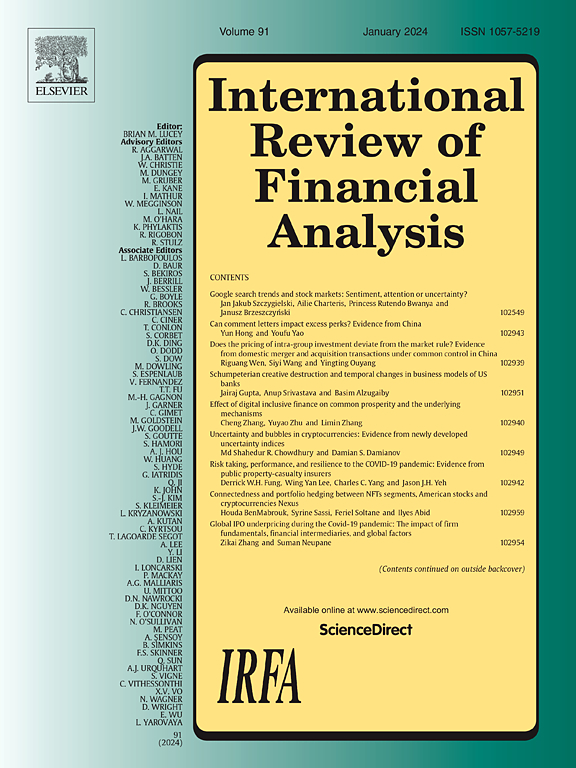马科维茨模型中均值的最优缩减
IF 7.5
1区 经济学
Q1 BUSINESS, FINANCE
引用次数: 0
摘要
本文通过将平均向量缩小到其大均值,并使组合权值的均方误差最小化,证明了组合权值的波动率较低,样本外夏普比高于1/n规则。研究还表明,将均值向量缩小到其大均值,并使均值向量的均方误差最小化,可以得到超过1/n规则的样本外夏普比;然而,这导致了投资组合权重波动的高值。这是因为最小化投资组合权重的均方误差也优化了模型决策变量的估计误差。因此,该方法可以作为预测和优化方法的一部分。相反,最小化均值向量的均方误差涉及将均值的估计值纳入计算决策变量的值(投资组合权重)。也就是说,它最小化了均值向量的估计误差,而不是决策变量。这种方法可以在先估计后优化的方法中考虑。本文章由计算机程序翻译,如有差异,请以英文原文为准。
Optimal shrinkage of means in the Markowitz model
This paper shows that portfolio optimization operates with low volatility in the portfolio weights and out-the-sample Sharpe ratio higher than the rule by shrinking the vector of averages to its grand mean and minimizing the mean square error of the portfolio weights. It is also shown that shrinking the vector of means to its grand mean and minimizing the mean square error of the vector of means can obtain out-of-sample Sharpe ratios that exceed the rule; however, this leads to high values of the portfolio weights’ volatilities. That is because minimizing the mean square error of the portfolio weights also optimizes the estimation error of the model’s decision variables. Therefore, this method can be part of the predict-and-optimize approach. In contrast, minimizing the mean square error of the vector of means involves incorporating the estimated values of the means to calculate the values of the decision variables (portfolio weights). That is, it minimizes the estimation error of the vector of means, not the decision variables. This method can be considered within the estimate-then-optimize approach.
求助全文
通过发布文献求助,成功后即可免费获取论文全文。
去求助
来源期刊

International Review of Financial Analysis
BUSINESS, FINANCE-
CiteScore
10.30
自引率
9.80%
发文量
366
期刊介绍:
The International Review of Financial Analysis (IRFA) is an impartial refereed journal designed to serve as a platform for high-quality financial research. It welcomes a diverse range of financial research topics and maintains an unbiased selection process. While not limited to U.S.-centric subjects, IRFA, as its title suggests, is open to valuable research contributions from around the world.
 求助内容:
求助内容: 应助结果提醒方式:
应助结果提醒方式:


